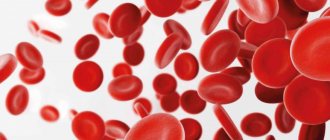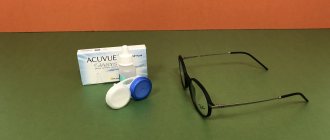Eyelids are movable folds of skin that protect our eyes from dryness, dust, bright light and other negative factors of the surrounding world.
The top of the eyelids is covered with thin and delicate skin, penetrated by a large number of blood vessels.
Beneath the skin is muscle tissue that allows you to easily open and close your eyes.
1
Diseases of the skin around the eyes and eyelids. Diagnosis and treatment
2 Diseases of the skin around the eyes and eyelids. Diagnosis and treatment
3 Diseases of the skin around the eyes and eyelids. Diagnosis and treatment
At the back of the eyelid are the meibomian glands, which produce a liquid secretion to keep our eyes moist and improve the contact between the eyelids and the ocular surface.
The mucous membrane of the eye is lined by the conjunctiva with lacrimal glands, which contributes to additional hydration of the eyeball and protection against infections.
Inflammation of each of the organs that make up the eyelid causes the development of a number of characteristic diseases.
Symptoms of puffy eyes
Experts consider two options for swelling: when the eyelids, conjunctiva, orbits or subcutaneous tissue under the eyes swell. Both or one eye may swell, most often without additional symptoms. Unilateral swelling in the absence of other symptoms is usually not a cause for concern. But if there is severe swelling of the upper and lower eyelids (on one or both sides), it is worth checking your health. Along with swelling, the following symptoms may appear:
- limited vision (especially due to severe swelling);
- profuse lacrimation;
- photophobia;
- feeling of dryness;
- peeling of the skin.
Sometimes, with severe swelling, mucous discharge appears. They may have a sticky consistency, be wet or dried out. Swelling of the eyelids can also be accompanied by pain, redness, and irritation of the mucous membrane.
List of sources
- Kucherova A.A., Osidach N.V., Pobedennaya G.P. On the issue of differential diagnosis of conjunctivitis / Clinical immunology. Allergology. Infectology. 2015.— No. 1 (80), p. 49-51.
- Zaikov S.V. Allergic conjunctivitis: clinical picture, diagnosis, treatment/ Clinical immunology. Allergology. Infectology. – 2011. – No. 1. – P. 38–43.
- Avetisov S. E. Ophthalmology. National leadership. Brief edition 2022, 736 pp.
- Sidorenko E. I., Dubovskaya L. A. Eye diseases 2010.
Causes leading to swelling of the eyes
Short-term swelling, which goes away quickly and independently, is usually not associated with external factors, diseases, or physiology. More often it is caused by the following factors:
- poor nutrition (drinking large amounts of liquid before bed, drinking alcohol, addiction to smoked meats, spicy, salty foods);
- stress;
- cry;
- violation of wearing contact lenses;
- visual stress;
- individual characteristics of the body;
- violation of the work and rest schedule;
- bad habits;
- constant lack of sleep.
Other subjective symptoms of eyelid swelling include a burning sensation, blurred vision, and redness of the sclera. Usually they are persistent and pronounced, which once again confirms the presence of ocular or systemic diseases.
Pathologies
Inflammatory diseases of skin folds are acute and chronic. It can affect the upper, lower eyelid, or both eyes at the same time.
Acute
Among the most common acute ones:
- Barley. External (purulent inflammation of the hair follicle) or internal (meibomian gland). Caused by Staphylococcus aureus disease.
- Furuncle. Purulent necrotic inflammation of the hair follicle, sebaceous glands and surrounding connective tissue. Localized on the upper eyelid, in the eyebrow area. Rarely on the edge of the eyelid in the area of the outer canthus. The causative agent is staphylococcus.
- Dacryoadenitis is inflammation of the upper eyelid. Complications after common infections (flu, sore throat, etc.)
- Dermatitis. Occurs as a result of allergies, gastrointestinal disorders, autoimmune diseases. To the symptoms listed above are added itching, peeling, and rashes in the form of blisters.
Less common are eyelid abscess and phlegmon.
Chronic
Chronic diseases include:
- Blepharitis is inflammation of the edges of the eyelids. Caused by skin bacteria. Demodectic blepharitis - caused by mites of the genus demodex. There is redness and swelling of the edges of the eyelids. Itching. Eyelash loss. With ulcerative blepharitis, there are ulcers and purulent crusts.
- Chalazion is a proliferative inflammation of the meibomian gland and the cartilage around it. It can occur both after barley and independently.
Blepharitis and chalazion are often combined with conjunctivitis.
Could swelling be a symptom of an allergy?
An allergic reaction is one of the common causes of swelling. This happens because mast cells release biologically active proteins to neutralize allergens. But when combined with irritants, they cause a reaction that is similar to inflammation. Hence the swelling and redness of the eyelids. Among the ophthalmological causes of eyelid swelling, the most common are:
- glaucoma;
- conjunctivitis;
- periorbital cellulitis;
- eyelid tumors;
- injuries;
- insect bites;
- thermal, chemical burns.
Often the appearance of swelling is the body’s reaction to smoke, dust and other irritants from the external environment.
Pathogenesis
In the pathogenesis of any edema, the following are important:
- increased permeability of the vascular wall;
- high intravascular pressure;
- a decrease in the level of proteins in the blood that hold the liquid part of the blood inside the vessel;
- increased concentration of salts in tissues;
- disruption of the outflow of venous blood and lymph.
The development of swelling of the eyelids is facilitated by the increased extensibility of the skin in this area, good blood supply, loose fatty tissue that can accumulate fluid and poor development of the muscles that provide elasticity to the eyelids. If we consider allergic edema, then all allergy symptoms, including swelling, are associated with the release of mediators from mast cells and basophils. The main mediator of the immediate response is histamine . Through H1 and H2 receptors, this mediator causes vasodilation, increased vascular permeability and the formation of prostaglandins (inflammatory mediators). These mechanisms explain the development of allergic tissue edema .
Why does swelling occur in dry eye syndrome?
Dry eye syndrome (DES) is a pathological condition that is based on a violation of the stability of the tear film.
It provides nutrition, hydration and protection to the cornea. But when few tears are produced or their composition changes, the tear film quickly begins to evaporate. Because of this, the mucous membrane dries out, a burning sensation, itching, redness, and swelling appears.
Various reasons contribute to the development of dry eye syndrome. This could be taking antidepressants, antihistamines, working at a computer for a long time, or staying in a room with dry air. Dry eye syndrome may progress during sun exposure (summer) because too much air temperature causes tears to evaporate.
You can compensate for moisture deficiency with the help of tear substitutes. These are special drops that contain moisturizing components. But, despite the fact that they have a composition close to tears, they do not contain mucins and lipids, which help the tear film to adhere to the surface of the eyeball and maintain stability.
One of the effective ways to restore the tear film is the use of Delfanto® in capsules. They contain a record amount of antioxidants (at least 35%), which help stimulate the production of your own tears.
How to treat eyelid inflammation
Treatment of inflammatory diseases of the eyelids is carried out in accordance with their cause. Depending on the pathology, therapy includes:
- the use of ointments (with sulfonamides, antibiotics, corticosteroids), an alcohol solution of brilliant green, drops;
- general therapy (antibiotics, sulfonamides, oral antihistamines);
- massage of the eyelids with removal of the contents of the glands;
- hardware physiotherapeutic treatment with UHF, laser heating, electrophoresis;
- surgical removal of chalazion;
- vitamin therapy autohemotherapy.
Sign up for an initial consultation with an ophthalmologist at the Optic-Center clinic by phone 8-800-775-78-58
.
Sign up for a comprehensive examination
What diseases can cause swollen eyes?
This symptom accompanies not only ophthalmological pathologies. It may be associated with systemic diseases. For example:
- gastrointestinal diseases;
- pathologies of the pituitary gland, thyroid gland;
- diseases of the gastrointestinal tract;
- infectious, viral diseases;
- liver and kidney diseases.
The list goes on, because there are more than 70 diseases that are accompanied by swelling of the eyelids. This could indicate problems with almost any organ.
Tests and diagnostics
Examination of a patient by an ophthalmologist. This is usually enough to identify the disease and make a diagnosis. If necessary, additional examinations are prescribed:
- Culture of eye discharge.
- demodicosis is suspected .
- Ultrasound.
- Biochemical tests to assess kidney and liver function.
- Determination of the level of specific IgE in allergic diseases.
- Tests with allergens (nasal/conjunctival) in case the results of determining allergen-specific IgE are questionable.
How to remove puffiness under the eyes?
It is difficult to immediately determine the cause of swelling. But you can try to eliminate provoking factors, for example, normalize your daily routine, diet, and get rid of bad habits.
If swelling is persistent, you need to seek medical help. Only a specialist can determine the reason why the eyelids are swollen and prescribe therapy.
If there is reason to believe that swelling of the eyelids is associated with everyday factors (crying, working at the computer, sleep disturbances, etc.), you can try to cope with this problem yourself. For example, using cold compresses. Cold causes blood vessels to contract, which reduces swelling.
Sometimes chilled tea bags can help relieve swelling quickly. Tea contains caffeine, which helps remove excess fluid from tissues. Tea bags must be applied for 15-20 minutes.
You can also try to remove swelling with massage (10-15 minutes a day). You also need to get good rest. Sleep should last at least 7 hours a day, and it is advisable to go to bed at the same time.
If swelling still periodically reminds itself, then you need to seek help from a specialist. Early detection of pathologies that cause swelling of the eyelids helps prevent serious complications.
If swelling is accompanied by a burning sensation, dry eyes, itching, irritation, you should take Delfanto® capsules regularly. They help increase the production of tear fluid by 89%, due to which the cornea and conjunctiva receive natural hydration.
Treatment
Pre-hospital assistance
In case of burns, rinse the eye with running water. The use of alkalis and acids to neutralize the effects of chemicals is prohibited. For trauma patients, a bandage should be applied to provide rest and eliminate eye movements and visual strain. You cannot remove foreign bodies yourself, so as not to aggravate the damage. For all eye diseases, it is important to observe the rules of personal hygiene.
Conservative therapy
Conservative treatment tactics are determined by the cause of swelling under the eyes. The following drugs can be used:
- Painkillers
. Analgesics in drops are administered to reduce pain during the examination. Subsequently, tablet forms are prescribed. - Antibiotics
. In the first days, broad-spectrum antibacterial agents are used. After receiving the result of the microbiological study, the treatment regimen is adjusted taking into account antibiotic sensitivity. - Antiseptics
. Indicated for conjunctivitis, after removal of superficial foreign bodies. - Reparation stimulants
. Necessary for corneal damage due to wounds, erosions, post-traumatic defects. - Antihistamines
. Recommended for allergic diseases.
According to indications, parabulbar, retrobulbar, subconjunctival injections are performed. Physiotherapeutic techniques are used and eyelid massage is performed.
Surgery
Taking into account the nature of the pathology, the following surgical interventions can be performed:
- Traumatic injuries
: suturing the eyelid, conjunctiva or cornea, removal of foreign bodies of the conjunctiva and cornea, necrectomy and keratoplasty for burns. - Purulent processes
: opening of barley, dacryocystorhinostomy, vitrectomy, evisceration, enucleation of the eyeball. - Other eye diseases
: penetrating keratoplasty, corneal transplantation.
In the long-term period after injuries and purulent diseases, some patients require elimination of ptosis, correction of eversion or entropion of the eyelid, antiglaucomatous operations for secondary glaucoma, and other interventions.
Causes
Swelling of the upper eyelid is not always a consequence of some disease. Sometimes the reasons for such a violation may be :
- improper distribution of fluid in the body in hot weather , with not only the eyelids swelling, but also the face in general, as well as the limbs;
- eating large amounts of salty or spicy foods or dishes before bedtime
- incorrect position of the head relative to the body during sleep. With prolonged violation of the body position, the fluid in the body is distributed in such a way that a large amount of it flows to the eyelids;
- prolonged overexertion, stress, lack of sleep and fatigue;
- alcohol abuse. In such cases, there is also an imbalance of fluid balance in the body, which contributes to the concentration of a significant amount of moisture in the eye area;
- restriction of drinking regime (with a lack of fluid, the body begins to accumulate moisture in different areas, one of which is the eyelid area).
Know! These are non-clinical reasons that lead to short-term swelling. In most cases, specific treatment is not required, and when the underlying cause is eliminated, the swelling itself goes away.
Ways to get rid of unsightly swelling on the face
If swelling appears as a result of an incorrect lifestyle and habits, you just need to change your mind. You should change your diet and get rid of the causes.
If not, you can use the following methods:
- Modern cosmetological methods. The first step is to contact a cosmetologist. Since there are enough procedures to combat this deficiency. You can try lymphatic drainage, electrical stimulation, peeling, mesotherapy, infrared laser;
- The radical method is surgical removal. But this is the most extreme case, when other methods do not give the desired effect;
- Application of the patch. They are very simple and convenient. And the herbal remedies included in the composition are very useful. The skin becomes moisturized and enriched with vitamins;
- Medications. If swelling is a consequence of illness, then the required medications are prescribed. If you have kidney disease, you should take diuretics;
- Application of creams and gels. There is a very large selection of different creams on the market. The most effective are those that contain the following components: collagen, coffee, hyaluronic acid, parsley extract;
- You can do massage and gymnastics. These procedures can be performed by a cosmetologist or independently;
- Masks. They are good to use when the cause is age, stress, various bad habits, and so on. Masks for every taste can be found at the pharmacy. Natural cosmetics have a good effect.
Kinds
Swelling of the upper eyelid can be of three types: inflammatory, non-inflammatory and allergic .
Inflammatory
Inflammation during edema occurs with any bacterial pathology , accompanied by the accumulation and release of pus.
For your information! Inflammatory processes are caused by the accumulation of such secretions in the glands of the organs of vision. If such symptoms are ignored, serious complications may develop.
Non-inflammatory
Non-inflammatory edema is characterized by less pronounced symptoms , which are most pronounced in the morning.
Most often, this type of swelling is bilateral and affects both organs of vision. The cause of the development of pathology is diseases of the internal organs (in particular the kidneys) or the accumulation of fluid in the periocular area.
Allergic
Allergic swelling occurs due to contact of the mucous membranes of the eye or skin above the eye with allergens of various origins.
If there is direct contact of the allergen with the organ of vision, the development of swelling occurs in the next few minutes.
If the allergen enters the body with food, liquid or medications, such a disorder appears only after a few hours.
This type of pathology is the most severe and is accompanied by a deterioration in the general condition and the occurrence of headaches, while swelling can spread to the entire face.
Treatment depending on the causes
eyelid swelling symptomatically , trying only to eliminate this symptom.
Attention! It is necessary to accurately diagnose the cause of the development of such a disorder and deal with this problem - if adequate treatment is prescribed, the swelling will quickly go away without taking special measures.
Regardless of the disease, the doctor can prescribe external decongestants - creams or ointments, which in most cases can quickly eliminate the symptom.
But in addition to their application, you should follow a course that involves the use of certain medications for various pathologies.
For barley
Infrequently, the upper eyelid may swell with a stye (sometimes such an abscess appears above the eye, although most often it forms on the lower eyelid).
The most rational thing to do with such a disease is to wait until the abscess opens on its own.
But in addition warming can be used anti-inflammatory drugs can also be used throughout the entire treatment period .
It’s worse if the stye develops not from the outside, but from the inside of the eyelid - in this case, ointments are applied from its inside, which can cause painful and uncomfortable sensations.
Also in such cases, ophthalmic solutions are instilled (not only anti-inflammatory, but also disinfecting, since if the abscess is opened, its contents fall on the mucous membrane and can cause inflammation).
First aid for acute angioedema of the eyelids
Since the greatest danger of angioedema lies in its spread to the respiratory tract, the ability to provide first aid to a patient can be a decisive step in preventing the development of complications.
For angioedema of the eyelids, you must adhere to the following sequence of actions:
- Allow the person to take a comfortable and least painful position;
- Stop exposure to the allergen if known;
- If possible, give the patient an antihistamine (Diphenhydramine, Suprastin, Tavegil, Diazolin) or inject it;
- If swelling of the eyelids is combined with visible swelling of the abdomen, give alkaline drinks (mineral water or diluted 1 g of soda per 1 liter of water) or activated carbon;
- To reduce swelling and burning in the affected area, apply a cooling compress or ice;
- Free your upper body from things that impede free breathing.
The above list of actions will greatly alleviate the condition of a person suffering from angioedema and prepare him for professional medical care.
Traditional methods
Masks and lotions that you can prepare at home are quite effective. They should be done, not only when necessary, but constantly. Regularity always gives effect. There are many recipes and options, so you can choose something to suit your taste.
You can moisten cotton swabs with green tea infusion and apply to your eyes. Or you can freeze the bag after drinking tea and do a massage. Ice also works well. And if you freeze ice from some herbal infusion, for example, from chamomile, it’s generally wonderful.
Parsley with sour cream gives a good effect. Apply the mixture to the skin and remove after twenty minutes. Any herbal compresses and tea lotions are very good to make.
A cucumber mask will also help. It is necessary to grind the cucumber to a paste, which must be applied to the eyelids, covered with a cotton wool disc, which can be soaked in milk.
Various methods of getting rid of this cosmetic defect will help make your face healthy, beautiful and radiant.










